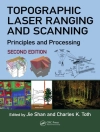Since its inception in 1977 from an amalgam of federal authorities, the U.S. Department of Energy (DOE) has administered numerous programs aimed at developing applied energy technologies. In recent years, federal oversight of public expenditures has emphasized the integration of performance and budgeting. Notably, the Government Performance and Results Act (GPRA) was passed in 1993 in response to questions about the value and effectiveness of federal programs. GPRA and other mandates have led agencies to develop indicators of program performance and program outcomes. The development of indicators has been watched with keen interest by Congress, which has requested of the National Research Council (NRC) a series of reports using quantitative indicators to evaluate the effectiveness of applied energy research and development (R&D).The first such report took a retrospective view of the first 3 years of DOE R&D programs on fossil energy and energy efficiency. The report found that DOE-sponsored research had netted large commercial successes, such as advanced refrigerator compressors, electronic lighting ballasts, and emission control technology for flue gas desulfurization. However, some programs were judged to be costly failures in which large R&D expenditures did not result in a commercial energy technology. A follow-up NRC committee was assigned the task of adapting the methodology to the assessment of the future payoff of continuing programs.Evaluating the outcome of R&D expenditures requires an analysis of program costs and benefits. Doing so is not a trivial matter. First, the analysis of costs and benefits must reflect the full range of public benefits that are envisioned, accounting for environmental and energy security impacts as well as economic effects. Second, the analysis must consider how likely the research is to succeed and how valuable the research will be if successful. Finally, the analysis must consider what might happen if the government did not support the project: Would some non-DOE entity undertake it or an equivalent activity that would produce some or all of the benefits of government involvement?This second report continues to investigate the development and use of R&D outcome indicators and applies the benefits evaluation methodology to six DOE R&D activities. It provides further definition for the development of indicators for environmental and security benefits and refines the evaluation process based on its experience with the six DOE R&D case studies.
Board on Energy and Environmental Systems & Committee on Prospective Benefits of DOE’s Energy Efficiency and Fossil Energy R&D Programs (Phase Two)
Prospective Evaluation of Applied Energy Research and Development at DOE (Phase Two) [EPUB ebook]
Prospective Evaluation of Applied Energy Research and Development at DOE (Phase Two) [EPUB ebook]
Achetez cet ebook et obtenez-en 1 de plus GRATUITEMENT !
Langue Anglais ● Format EPUB ● Pages 233 ● ISBN 9780309178983 ● Maison d’édition National Academies Press ● Publié 2007 ● Téléchargeable 3 fois ● Devise EUR ● ID 7142947 ● Protection contre la copie Adobe DRM
Nécessite un lecteur de livre électronique compatible DRM












